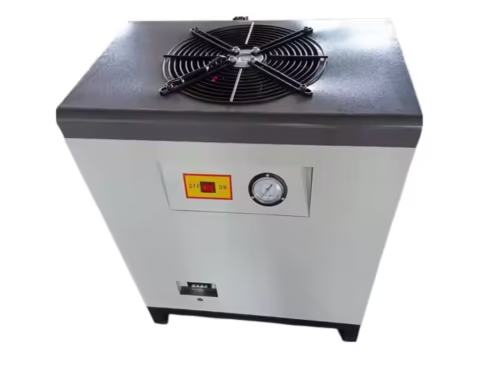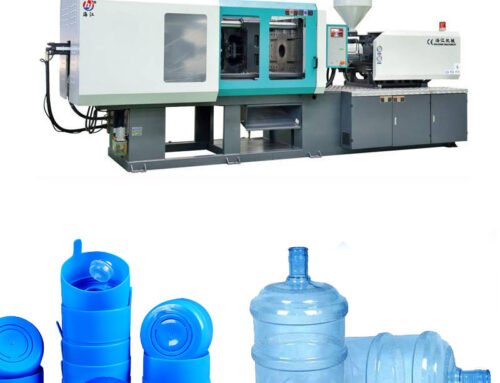Introduction
Blow molding machines are an essential part of manufacturing processes that produce hollow plastic parts like bottles, containers, and automotive components. However, these machines can encounter various problems that impact their efficiency and product quality. Blow molding machine troubleshooting is crucial for maintaining the machine’s performance and preventing costly downtime. In this article, we will explore some of the most common blow molding machine issues, their possible causes, and how to fix them effectively.
By the end of this guide, you will have a better understanding of the troubleshooting process and be equipped to handle any challenges that arise with your blow molding machine.

Common Blow Molding Machine Problems and How to Solve Them
-
Poor Product Quality
One of the most common issues in blow molding machines is poor product quality. This can manifest as defective parts, such as bottles with weak spots, uneven walls, or improper shape. Various factors contribute to this problem, such as incorrect temperature settings, insufficient cooling, or inadequate mold design.
Causes and Solutions:
- Inconsistent Temperature Control: If the heating system is malfunctioning, the plastic may not be properly heated, resulting in poor molding. To resolve this, check the temperature settings on the machine’s controller and ensure they align with the material specifications.
- Improper Cooling: Blow molding requires precise cooling to solidify the plastic. If the cooling rate is too slow or fast, it can lead to defects. Inspect the cooling channels for blockages and ensure that the air pressure is at the correct level.
- Faulty Mold: If the mold design is flawed or if it is damaged, the final product may not form properly. Inspect the mold for wear and tear, and replace or repair it as needed.
-
Machine Overheating
Machine overheating is another common issue in blow molding. Overheating can lead to machine failure, safety risks, and production delays.
Causes and Solutions:
- Poor Ventilation: Insufficient airflow or blocked air vents can cause overheating. Ensure that the machine’s ventilation system is clean and functioning properly.
- Overloaded Motor: If the motor is overloaded, it can overheat. Check the motor’s performance and adjust the load to prevent it from overworking.
- Worn-out Cooling System: The cooling system regulates the machine’s temperature. If it is malfunctioning, the machine will overheat. Clean the cooling system regularly to avoid clogs and ensure proper functioning.
-
Unstable Blow Molding Process
Blow molding requires precise timing, temperature, and pressure. An unstable blow molding process can result in inconsistent product quality or malfunctioning machines.
Causes and Solutions:
- Incorrect Pressure Settings: Low or high pressure can affect the molding process. Check and adjust the air pressure to the recommended levels for the material you are using.
- Material Inconsistency: Variations in the raw material can lead to an unstable molding process. Ensure that the raw material used is of consistent quality and properly stored.
- Improper Mold Alignment: If the molds are misaligned, the product may not form correctly. Regularly check and adjust the alignment to ensure precise mold closure.
-
Extruder Issues
The extruder is a crucial component in the blow molding machine, and its malfunction can halt the entire production process. Problems such as inconsistent extrusion, nozzle clogging, or uneven melt flow can occur.
Causes and Solutions:
- Clogged Nozzle: A clogged nozzle can prevent material from flowing properly. To resolve this, clean the nozzle regularly to avoid material buildup.
- Inconsistent Melt Flow: If the extruder is not providing a consistent melt flow, it may be due to a worn-out screw or barrel. Replace these components if necessary to restore optimal performance.
-
Blow Pin Issues
The blow pin is responsible for inflating the plastic material inside the mold. If the blow pin is faulty, it can lead to products with improper shape or uneven thickness.
Causes and Solutions:
- Clogged Blow Pin: A clogged blow pin can result in inconsistent inflation. Clean the blow pin regularly to ensure that air flows smoothly.
- Damaged Blow Pin: If the blow pin is damaged or worn out, it may not perform correctly. Inspect the blow pin regularly and replace it if necessary.
Troubleshooting Table for Blow Molding Machines
| Problem | Possible Causes | Solution |
| Poor Product Quality | Incorrect temperature, insufficient cooling, mold issues | Adjust temperature settings, clean cooling system, inspect and repair mold |
| Machine Overheating | Blocked vents, overloaded motor, malfunctioning cooling system | Clean vents, adjust motor load, inspect cooling system |
| Unstable Blow Molding Process | Incorrect pressure, material inconsistency, mold misalignment | Adjust pressure settings, ensure material consistency, check mold alignment |
| Extruder Issues | Clogged nozzle, inconsistent melt flow, worn-out components | Clean nozzle, replace worn-out extruder components |
| Blow Pin Issues | Clogged or damaged blow pin | Clean or replace blow pin |
Blow Molding Machine Troubleshooting Tips
Here are some essential tips for troubleshooting your blow molding machine:
- Regular Maintenance: Schedule regular maintenance to check for potential issues before they become major problems. This can prevent unexpected downtime and improve the lifespan of your machine.
- Use Quality Materials: The quality of the raw material used in the blow molding process is crucial. Ensure that you are using high-quality plastic to reduce the chances of defects in the final product.
- Training and Education: Ensure that your operators are well-trained and familiar with the machine’s settings, maintenance procedures, and troubleshooting steps. This will help them identify and resolve issues more effectively.
Related Questions and Answers
1. What causes poor product quality in blow molding?
Poor product quality can result from incorrect temperature settings, inadequate cooling, or faulty mold design. Ensuring proper temperature control and mold inspection can help fix this.
2. How can I prevent my blow molding machine from overheating?
Regularly clean the ventilation system, check the motor load, and maintain the cooling system to prevent overheating.
3. Why does the blow molding process become unstable?
Instability can be caused by incorrect pressure settings, inconsistent raw material, or mold misalignment. Adjust pressure settings and check the mold regularly.
4. What should I do if my extruder is not functioning properly?
Clean the extruder nozzle regularly, and if issues persist, check for worn-out components like the screw or barrel.
5. How do I fix blow pin problems?
Clean or replace the blow pin to ensure it inflates the plastic correctly and evenly.
6. Can improper pressure cause blow molding problems?
Yes, both low and high pressure can affect the molding process, leading to defects in the final product.
7. How do I maintain a blow molding machine?
Regularly clean and inspect key components like the mold, extruder, and cooling system. Follow the manufacturer’s maintenance schedule.
8. What is the best way to troubleshoot blow molding machine errors?
Start by inspecting the machine for common issues such as temperature, pressure, and material quality. Refer to the troubleshooting table for specific fixes.
9. Why is consistent material quality important in blow molding?
Consistent material ensures that the molding process remains stable, leading to high-quality products and reduced waste.
10. How often should I replace blow molding machine components?
It depends on usage, but regularly inspect key components like the blow pin, extruder, and motor. Replace them when they show signs of wear.
Conclusion
Troubleshooting blow molding machine issues is essential for ensuring smooth production processes and maintaining product quality. By understanding the common problems and their solutions, operators can quickly identify and resolve issues, reducing downtime and improving efficiency. Regular maintenance, proper material handling, and operator training are key components of a successful blow molding operation. With the right knowledge and practices, you can troubleshoot and fix common blow molding machine problems and keep your production line running smoothly. Contact with us if you have any issue!





